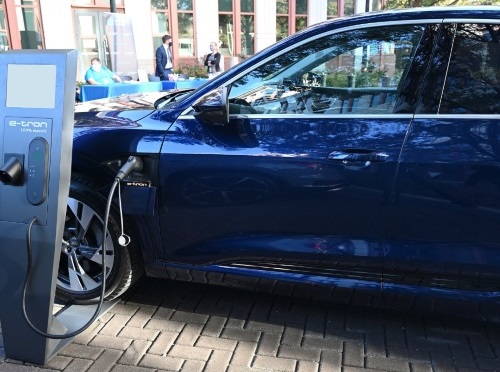FEDERAL ACTION
AASHTO Re:source Podcast Examines the IIJA – AASHTO Journal
WH has new slogan on infrastructure, but message the same – AP
FACT SHEET: President Biden Signs Executive Order Catalyzing America’s Clean Energy Economy Through Federal Sustainability – White House (Media release)
MARAD Announces $12.6 Million in Grants for America’s Marine Highways – MARAD (Media release)
FACT SHEET: The Biden-Harris Electric Vehicle Charging Action Plan – The White House (Media release)
COVID-19
US Supreme Court dismisses challenge to air travel mask mandate – Jurist
Near pre-pandemic travel volumes expected to continue through December holidays – TSA (Media release)
INFRASTRUCTURE RESILIENCE AND SUSTAINABILITY
A Conversation With Connecticut DOT Commissioner Joe Guilietti – Taking Transportation blog
Oklahoma secretary of transportation tempers expectations for funding boost from bipartisan infrastructure deal – KWGS Radio
TikTok Influencer and Transportation Secretary Pete Buttigieg Break Down Build Back Better Agenda – Teen Vogue
Alaska Governor, DOT Commissioner Announce AMHS Infrastructure Plan – Alaska Governor’s Office (Media release)
UNH Research Finds Future Snowmelt Could Have Costly Consequences on Infrastructure – University of New Hampshire (Media release)
AIR QUALITY
Union Pacific Railroad Works to Cut Its Carbon Emissions – AP
Whitmer Executive Directive: Electric Cars And Clean Energy Jobs – WBCK Radio
Skagway works to pioneer one of the first electric ferry programs in the country – KHNS Radio
Biden praises Kansas City’s free electric buses as the future of infrastructure – KCUR Radio
FAA research grants aim to tackle aviation’s massive deficit of greener fuel – CNBC
California truckers could soon have to worry about pollution tickets along with speeding tickets – KFSN-TV
Seattle, Tacoma Ports Plan to Phase Out Maritime Emissions – Maritime Logistics Professional
Oregon Joins Other Western States With Electric Truck Rules – Government Technology
ENVIRONMENTAL JUSTICE
The problem and potential of Oakland’s parks – Oaklandside
Better Ways for FTA to Measure Transit Equity – TransitCenter (Commentary)
NATURAL RESOURCES
Houston-based flood warning system to bring life-saving alerts to Southeast drivers during severe weather events – KBMT-TV
A northern extension of the Florida Turnpike is moving ahead, despite public opposition – WMFE Radio
Farmers Embrace State-Federal Partnerships to Protect Water Quality – American Farm Bureau Federation
HEALTH AND HUMAN ENVIRONMENT/ACTIVE TRANSPORTATION
Expansion of U.S. Bicycle Route System Continues – AASHTO Journal
FDOT focuses on pedestrian safety – West Volusia Beacon
Northwest Arkansas receives 9 grants for trails, sidewalks – KFSM
More cities are embracing scooters, e-bikes. This urban planner sees growth in shared mobility. – Washington Post
IDOT meeting will study pedestrian, bicycle accommodations on Bob Michel Bridge – WEEK-TV
CTDOT Announces Launch Of Vision Zero Council Website For Traffic Safety Information And An Invitation For Public Engagement – Connecticut DOT (Media release)
TRB RESOURCES/ANNOUNCEMENTS
Resource Guide for Improving Diversity and Inclusion Programs for the Public Transportation Industry – TRB
FEDERAL REGISTER NOTICES
Revised Definition of ‘‘Waters of the United States’’ – Corps of Engineers and EPA (Proposed rule)
Notice of Availability of a Final General Conformity Determination for the California High-Speed Rail System, Burbank to Los Angeles Section – FRA (Notice)
Notice of Funding Opportunity for the Federal-State Partnership for State of Good Repair Program – FRA (Notice)
Native American Graves Protection and Repatriation Review Committee Notice of Public Meetings National Park Service (Notice)
Request for Nominations for the National Park System Advisory Board – National Park Service (Notice)
Public Hearing for RFS Annual Rules – EPA (Notice)


